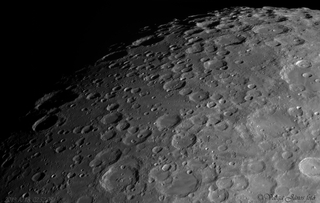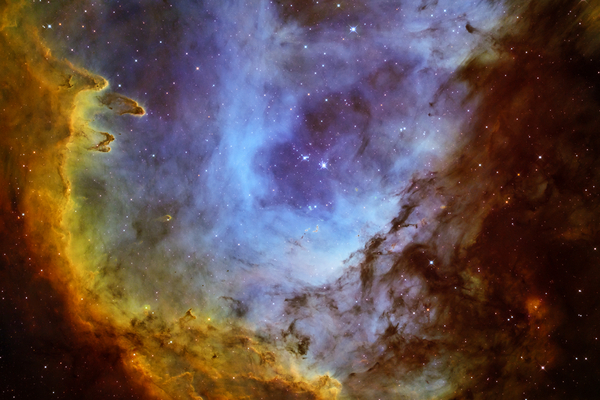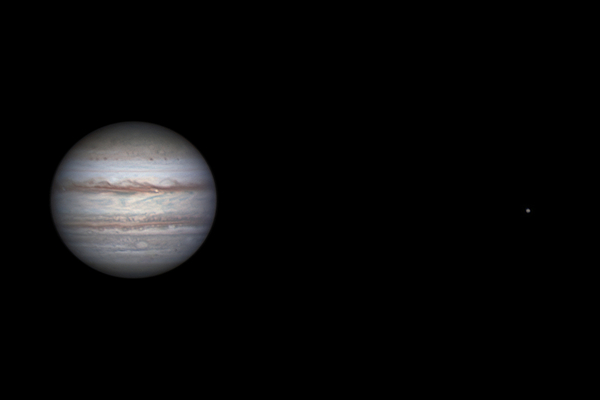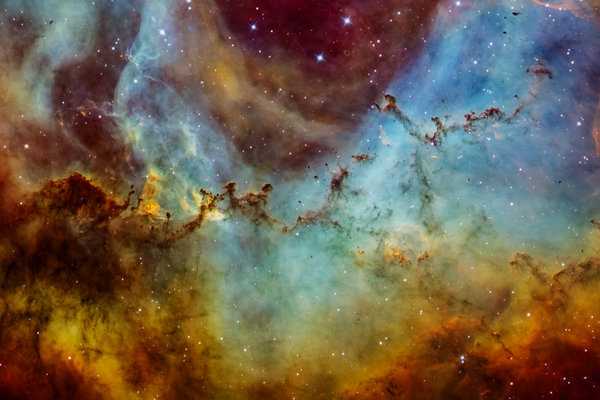Picture of the Month - March 2020 - Southern craterfield of the waning Moon
János Varga's exceptionally detailed capture of our Moon's southern hemisphere
A wonderful and special astrophotography image each month by Hungarian astrophotographers.
Moon, the grateful subject
The Moon is the celestial companion of Planet Earth which is a celestial body that can be well observed with the naked eye. Almost everyone has a defining experience in connection with the Moon, may it be the the full moon on a pleasant summer evening or the mesmerizing sight of a total solar eclipse. Maybe many of us wondered, what can it be like to observe the surface of the Moon from a close distance or even to walk on it. One of the advantages of astrophotography is that the closer observation of the Moon’s surface can be achieved with a powerful telescope and a good image capture device in a good quality. A good result is a stunning experience, it is like looking out the window of a real spaceship.
The Moon that doesn’t look similar to the Earth
The Moon is the only extraterrestrial celestial body on which surface amateur astronomers can observe details the size of a few kilometers. The cause of this lies in the relative close distance of the Moon, but despite this we are greeted by a whole different world up there than what we are used to on our home planet. The surface is gray and bare with no trace of life, water, atmosphere or weather. Nothing has changed on the surface of the Moon for millions of years. This picture showing the carterfield on the southern hemisphere of the Moon sheds light on the fact that for billions of years the greatest surface-forming force on the Moon has been the impact of asteroids. These rare events are commemorated by the craters formed during the impact. The largest of the craters can reach up to 50-100 kilometers in diameter.
A sharp Moon photo requires a very precise technique
It is a real challenge to take such a detailed picture of the Moon, because not only a large telescope but ideal atmospheric conditions and special image capturing and image őrocessing method are required as well. A more accurate picture about the complexity of the challenge can be obtained by reading the detailed description of the author of the picture, János Varga:
The high position on the autumn sky and the calm atmosphere provided mostly favorable conditions for photographing our celestial companion, therefore better-than-average details were already visible on the live screen of the monitor. In order to obtain fine details by doubling the standard focal length of the APM 2,67x Comacorr-Barlow lens I reached 25-30 % more focal length reduction. This provided an ideal picture size for the 250/1200 Newton telescope and the ASI 174MM cool camera. Even the light was sufficient for the approx. 130 frames / sec image capture. Because of the good seeing I remember not needing too many frames, I stacked 400-500 selected pictures. During the post-processing I took great care to preserve naturality, I sharpened the stacked picture in several steps with a small radius.
The beauty of Moon photography
And why is it worth to plunge into this complex photographic process? Some of the author's thoughts may shed light on this for many of us:
In my childhood I saw a satellite image of one of the crater triplets of the Moon and I fell instantly in love with the exciting world of the surface of the Moon and with the strange play of light and shadow. Later, as I built a telescope suitable for astrophotography it was obvious to start with the Moon, even tough the capability of the analog technique was only a fraction of today’s digital technology. Nowadays it is amazing in the photography of the Moon that the quality of the pictures taken by the once envied professional telescopes became available to us as well, moreover it is possible to go beyond it thanks to the evolving digital technology. The most excited thing for me is when not expected surface details appear on the stacked frames.
János Varga





